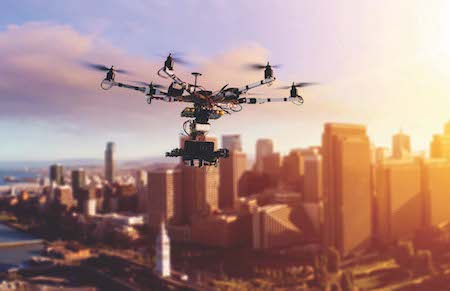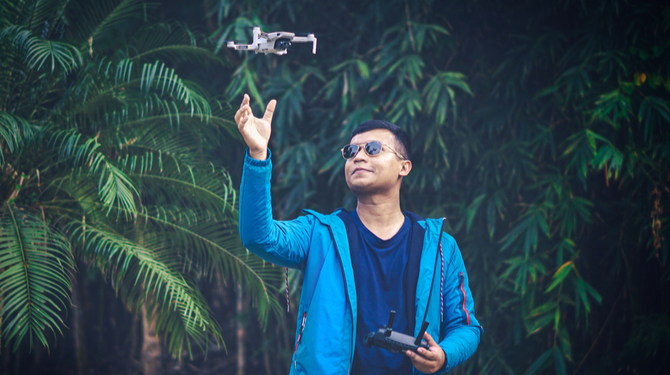Until the end of August, companies looking to fly unmanned aircraft systems (“UAS” or “drones”) for commercial purposes to enhance their business operations in the United States – whether for inspections, security or aerial photography, among other purposes – had to apply for a special license from the Federal Aviation Administration (“FAA”). That “Section 333” approval process was burdensome and costly, and constrained true expansion within the UAS industry.
That changed on August 29. We have reached a milestone, as the final rule for the operation and certification of small UAS (Part 107) has officially gone into effect – for the first time, broadly authorizing commercial UAS operations with small drones in the United States. The new rule permits the commercial operation of UAS weighing less than 55 pounds, and includes the following key requirements and operational limitations:
- The operator must have a remote pilot certificate, pass a TSA background check, and be at least 16 years old;
- Operations must remain within visual line-of-sight (VLOS);
- No operations are allowed over non-participants;
- Flights must occur during daytime or civil twilight (30 mins before and after official sunrise/sunset), with the appropriate lighting;
- Maximum airspeed is 100 mph;
- Maximum altitude is 400 feet above ground level or, if remaining within a 400-foot radius of a structure, within 400 feet of the immediate uppermost point of the structure; and
- Operations are permitted in Class G (uncontrolled) airspace without air traffic control (ATC) approval, and in Class B, C, D, and E with ATC approval.
We have reviewed many of the conditions and limitations imposed by the rule in greater detail elsewhere. The FAA has recently released additional guidance on studying for the certificate test, applying for waivers, and how to operate in controlled airspace. Over the last few months, we have received numerous questions from our clients about what this new small UAS rule means for them and their businesses. To commemorate the implementation of this historic final rule, we have come up with our own “Top 10 Q&A List” relating to UAS use and the Aerospace, Defense and Government Sevices (ADG) community:
- My company wants to use drones. What do I have to do to receive a Remote Pilot Certificate, and how difficult will it be to obtain one?
If you do not already have a manned aircraft pilot’s license, you will need to take an aeronautical knowledge exam. The test has 60 multiple choice questions and you need to score a 70% or better to pass. You can register to take the exam at one of the FAA’s 700+ Testing Centers by calling CATS (Computer Assisted Testing Service) at 1-800-947-4228. You will also need to submit an application electronically using the FAA’s IACRA system and pass a TSA background check.
- Can I fly near airports/heliports?
Under Part 107 you are prohibited from interfering with airport/heliport operations, and you need to yield the right-of-way to other aircraft, but there is no required set-back from airports and heliports as there was under the Section 333 Exemption/Blanket-COA framework. Keep in mind, however, that you will need ATC approval to operate in Class, B, C, D, and E airspace.
- Part 107 does not go far enough for my company – we need to be able to fly beyond visual-line-of-sight for security purposes or over people for inspections. How difficult will it be to get a Part 107 waiver and how long will it take?
As an initial matter, Part 107 provides that waivers may only be granted from a few of the restrictions in the rule: daylight operations, visual line of sight, visual observer, operation of multiple UAS by one Remote Pilot, yielding the right of way, operations over people, operations in certain airspace, and operating limitations for small UA. Hogan Lovells assisted CNN in obtaining the first Part 107 waiver which permitted operations over non-participating persons. In terms of timing, the only guidance we have from the FAA is that waiver applications should be submitted at least 90 days before the intended flight operation. The key to the waiver process is making the safety case that you can fly with an equivalent level of safety to operations conducted under Part 107. Ultimately, it will likely vary depending on the complexity of what you are asking to do and the strength of the supporting information and data you provide to the FAA.
- What in particular will be required for a waiver authorizing UAS operations beyond visual-line-of-sight of the Remote Pilot?
The ability to fly beyond visual line of sight (for inspections or security purposes, for example) is critical to making drone technology efficient and cost-effective. Part 107 requires UAS to be operated within VLOS of the Remote Pilot because the Remote Pilot needs to be able to see-and-avoid other aircraft and obstacles. If you need operations beyond VLOS, you will need to demonstrate to the FAA that the UAS is equipped with technology that can safely satisfy the see-and-avoid requirement of Part 107.
- What are the restrictions on flying over people?
You cannot fly directly over unsheltered people that are not “directly participating in the operation of the UAS.” People directly participating in the operation of the UAS include the Remote Pilot, Visual Observer(s) (if used), and any other personnel necessary for the safe operation of the UAS. You can request a waiver under Part 107 to operate over unsheltered people who are not involved in the operation of the UAS, but you will need to demonstrate to the FAA that you can do so safely.
- Do I need to get permission to fly over someone else’s private property?
Part 107 does not include a requirement to obtain permission to fly over someone else’s private property. That being said, it is important to remember that there is a patchwork of state and local laws relating to, among other things, trespass, nuisance, and privacy that might impact where you can fly. There are voluntary UAS privacy best practices, which may be helpful in this regard.
- How can I stop someone from operating unauthorized UAS operations over my property?
Many ADG companies have critical or sensitive infrastructure, and there are concerns about rogue drones being flown over their private property. While it might be tempting, interfering with a drone’s flight is not the answer. The best thing to do is document the unauthorized flight and contact local law enforcement. Keep in mind that you might have to educate responding officers regarding the circumstances and the applicable legal standards. Make sure you understand what the regulatory requirements are for flying in the airspace around your property, and be prepared to discuss those requirements with any responding officer. Critical infrastructure facilities may soon have another option for keeping unauthorized UAS away from their property. Congress just passed a new FAA Reauthorization Bill that includes a requirement for the FAA to establish a process to allow applicants to petition the FAA to prohibit or restrict the operation of UAS in close proximity to fixed site facilities, including critical infrastructure. Please let us know if you would like to know more about that process.
- Can the FAA regulate indoor UAS flights?
No, the FAA’s jurisdiction covers navigable airspace, which does not include airspace inside of an enclosed structure such that it would be impossible for the UAS to escape. For example, a fully enclosed outdoor-netted cage would be sufficient if it would be impossible for the UAS to escape the cage.
- Can I fly higher than 400 feet above ground level (AGL) to inspect facilities or towers?
Maybe. Part 107 generally restricts UAS from operating above 400 feet AGL, but there is an exception for UAS operated within a 400-foot radius of a structure. When operating within a 400-foot radius of a structure, you can fly up to the highest point on the structure plus an additional 400 feet higher. For example, if you were inspecting a 1,000-foot tower and remained within a 400-foot radius of the structure, you could technically fly up to 1,400 feet AGL. Keep in mind, however, that you still need to comply with all of the other Part 107 restrictions including airspace restrictions and the requirement that the UAS only be operated within VLOS.
- Is my Section 333 Exemption good for anything anymore?
If you already have a Section 333 Exemption, you may continue to operate under it or you can elect to operate under Part 107. Whether it makes sense to continue operating under your Section 333 Exemption will depend on what you want to do. You will obviously want to operate under the regime that provides the most operational flexibility. For most operators, Part 107 will provide more flexibility than the conditions and limitations in the Exemption. We discuss the transition from the Section 333 regime to Part 107 in an earlier blog post.
Although Part 107 has been broadly welcomed by the expectant industry, there are still quite a few areas that need further explanation. According to Ellman, “Part 107 going into effect was a significant step forward for the commercial drone industry in the United States, and represents excellent progress. However, to truly unleash the potential for the industry, we need to move beyond the rule. We need additional rules that broadly authorize safe flights above people, beyond visual line of sight and at night. Otherwise, critical UAS operations that often must occur in these conditions, such as disaster response, pipeline inspection, news gathering or time-sensitive agriculture operations, will be stalled.”



.jpg)
.jpg)
.jpg)

.jpg)


.jpg)
.jpg)
